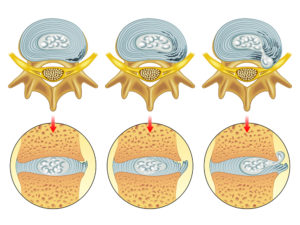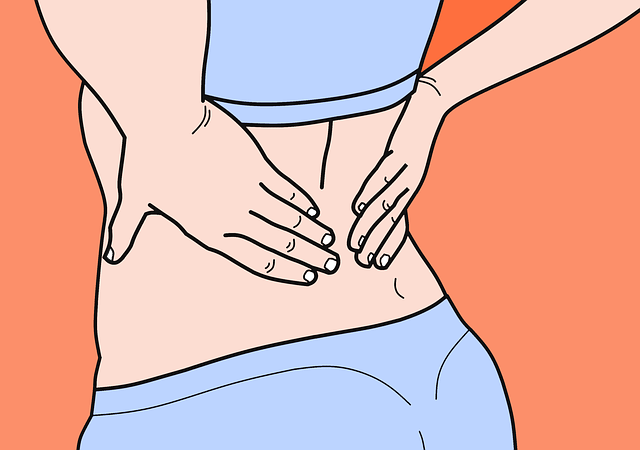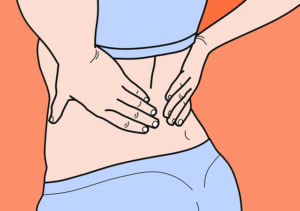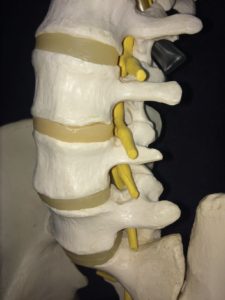Today, we are going to talk about a very common yet poorly understood topic – leg pain that is caused by a problem in the lower back. While up to 15% of people will suffer from this issue, most will be confused as to why they are in pain and unsure of what to do to fix it. Let me show you why this can occur and what you can do to help it.
Before we dive in, please be aware that we are part of the Amazon Affiliate programme. This page may contain Amazon affiliate links, so if you choose to purchase a product for your sciatica that we recommend through a link on this page, we will receive a small commission at no extra cost to you. This helps us keep Overcome Sciatica alive! Thank you for your support. Please be assured that we only ever recommend products that we truly believe can help.
A very common story
Let’s talk about a story I hear all the time:
A person develops some back pain that they thought would just disappear…
Instead of disappearing, the back pain continues to worsen… And even more alarmingly, their leg develops a searing pain right down the back of it, running from their buttock all the way to their foot…
They also start to develop pins and needles and numbness in their foot…
Because of these worrying new symptoms, they head to their doctor’s office. The well-meaning doctor tries to explain how all these problems are connected – but he only has 5 minutes to spend with each patient, so he writes a prescription for some pain pills and sends them on their way…
The poor person is now left scared, confused and STILL in pain, with no clue how the problems are linked!
Does this sound familiar?
If it does, you’re like the many people who have told me this story before!
But don’t worry – the aim of this article is to explain this phenomenon and leave you with a better understanding of how back and leg pain is linked. What’s more, I’ll also discuss my recommended next steps if the story above is anything like what you’re experiencing right now.
The Truth About Back Pain
Back pain is extremely common.
So common, in fact, that almost everyone will suffer from back pain at some point in their lives. Most times, back pain will just disappear on its own within a week or two.
However, if your back pain hasn’t resolved on its own within 2 weeks, it may represent a problem that needs addressing. For some people, if their back pain goes unchecked for long enough, it can lead to a problem called “sciatica”. Sciatica simply means “pain in the leg caused by a nerve”.
The Symptoms of Sciatica
If you’re thinking that “this sounds like my problem”, let’s talk about the symptoms you might be experiencing:
- Pain in the leg: This is one of the classic sciatica symptoms. The pain that you feel follows the course of the affected nerve in your leg. If the sciatic nerve is affected, you feel pain down the back of the leg, sometimes all the way to the toes. This is because that is the path that the sciatic nerve takes.
The classic sciatic pain we see starts from the back or buttock and runs all the way down the back of the leg in a shooting line.It is also possible for the pain to be felt in one area of the leg only. Often this is the case in the calf.
The pain can be described as sharp and shooting, “like an electric shock”, but it is also possible for sciatica to be felt as a dull throbbing ache, too. If it is not the sciatic nerve that is affected, the pain can run down the side of the leg, or down the front of the leg. It can also run into the groin, too. - Pins and needles or numbness in the legs or feet: This symptom is very common in people who suffer from sciatica symptoms, and is caused by the same thing that causes the leg pain. Often, the pins and needles or numbness will affect the same areas in the legs as the pain does. These sensory changes can range from a tingle, “fizzing”, or slightly “dull” feeling, to complete loss of sensation, depending on severity.
- Loss of strength in a muscle group in the legs: When the affected nerve gets compressed to a point that the signals within that nerve cannot be carried effectively to the muscles any more, a loss of strength occurs. This can be quite a serious symptom, and if you feel this may be happening to you it is advisable to get a check-up from a doctor as soon as you can.
- Back pain: Back pain usually accompanies sciatica. This is because the back is the problematic area for at least 90% of cases of sciatica. It is entirely possible to have the other sciatica symptoms without any back pain, and for the back to still be responsible. However, not all causes of back pain also cause sciatica.
So, why do we get these symptoms?
Let’s talk about the way our backs are made for a moment to paint the full picture.
The back is made up of bone segments, called vertebrae, all stacked upon one another. Between these vertebrae are the intervertebral discs, tough sacs made up of strong fibres combined with water and nutrients.
These discs are responsible for shock absorption through the spine, as well as making movement easier.
The bony joints that join the segments together are called “facet joints”. They allow the spine to move.
In the middle of the vertebral bones within the lower back, runs the spinal cord.
The nerves that allow your body to function leave the spine level with the vertebral bones, via a nerve root which then becomes a nerve.
These nerves then run into the leg, supplying the skin with sensation and our muscles with the signals to move.
This is what happens when everything is working normally, anyway…
Sometimes, someone can suffer an injury to one of the discs between the vertebrae. If this happens, a disc can press on one of the nerve roots in the spine which will not only cause back pain, but leg pain along the course of the affected nerve too.
This is the most common cause of sciatica. This problem is usually referred to as a “disc bulge”, or “prolapsed/herniated disc”, or even “slipped disc”.

In older individuals, arthritis (or ageing changes) in the facet joints may also cause back and leg pain. This is because the joints in the spine can become enlarged with bony spurs, which can press on a nerve root and cause pain, stiffness and numbness.
Why is sciatica SO painful?
Put simply, nerves do not like to be touched!
Touching, pinching or compressing a nerve causes a reaction around that area, causes pain along the entire course of that nerve.
As if that wasn’t bad enough, you will also get a chemical reaction around the affected area which exacerbates these symptoms.
The chemical reaction that occurs when we compress a nerve is like the reaction we get when we are stung by a bee.
So, when your back is responsible for your leg pain, it is because something is touching, pinching or compressing a nerve. This happens because the nerve roots run through tight spaces within the lower back. This leaves them vulnerable to being contacted if a disc or enlarged joint has invaded the space within which the nerve runs through.
Now that I understand what’s causing my back and leg pain, what do I do?
This is a very sensible question! Unfortunately, for many people, there is a lot of confusion surrounding exactly what they need to do to ease their pain, regain their independence and get off pain killers.
Our first recommended step would be not to panic! Sciatica is a very common condition and there are things you can do to help it.
Second, you should make sure you are doing the RIGHT exercises to help sciatica!
Are You Looking for RAPID Relief from Sciatica?
My good friend, colleague and fellow international sciatica expert, Dean Volk, has a brand new sciatica relief video course available – and I’m delighted to be an official sponsor!
Check out Dean Volk’s “Kicking Sciatica OUT of the Butt!” Online Pain Relief Course Here!
I can proudly recommend Dean and his course for sciatica sufferers – because I’ve seen his incredible results first-hand. You can check out his course (and get lifetime access to the videos and bonus content) by clicking HERE.
Summary
In this article, we have discussed how a back problem can cause leg pain and answered some of the most common questions around sciatica.
Back pain and sciatica are extremely common but they ARE treatable! The key is to seek out timely, expert advice and get treatment from the experts to ease the problem and prevent chronicity.
Have you found our explanations of back pain and sciatica useful? Let me know by leaving a comment below!
The information on Overcome Sciatica should never be used as a substitute for medical advice from a doctor. Never put into action any tips or techniques from Overcome Sciatica without checking with your doctor first. Please see full terms of use here.





